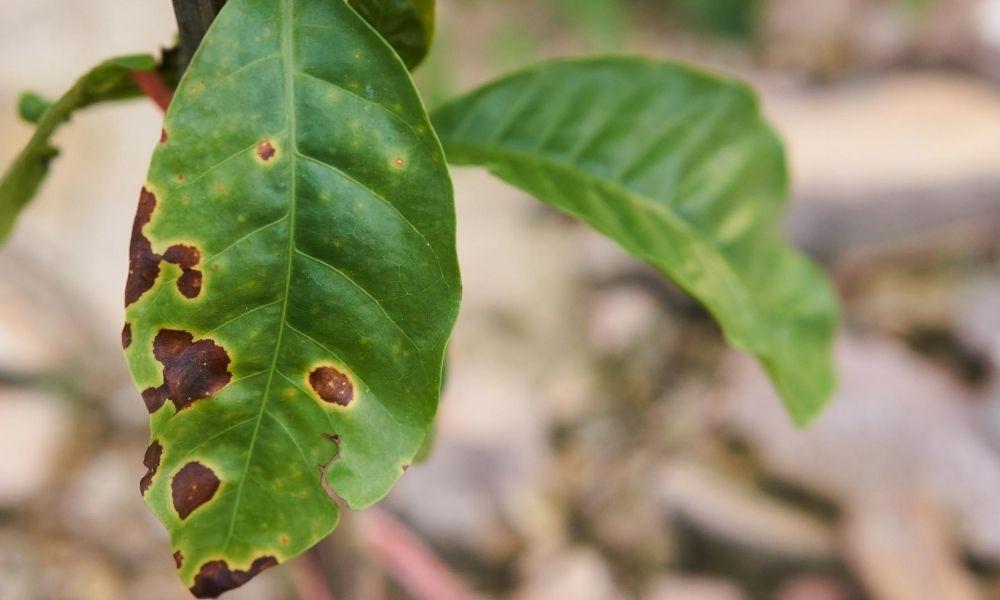There are many diseases that can strike your garden for a bevy of reasons. This guide will show you how to identify and treat common plant diseases so you can maintain a healthy garden all year round.
GRAY MOLD
If flowers or produce in your garden develop gray or brown mushy spots, it’s a sign of gray mold (AKA botrytis). This disease typically starts with a wilting, wounded, or dying plant before spreading. Over time, those gray spots begin housing gray spores that can move easily to other plants with the help of the wind. The rate of growth for these spores can increase if humidity levels are high in your area.
To combat gray mold, prune the infected parts of plants and safely dispose of them. After this, apply a fungicide to prevent the disease from spreading to the rest of the plant. However, it’s important to be mindful of your clean-up process. First, disinfect the equipment after you finish pruning. Secondly, make sure to clean up any debris that fell into the soil during the pruning and removal process. If you don’t, this can promote the further growth of gray mold in your garden.
ANTHRACNOSE
This fungal disease typically attacks trees, shrubs, and some fruit. Most of the time, you’ll notice it on leaves or twigs. This is important to keep an eye out for because it’s there that anthracnose can overwinter. You’ll know it’s anthracnose if you find leaves or twigs with brown or black lesions, particularly along leaf veins. It might sound like a small cosmetic issue, but if untreated, anthracnose can quickly wilt and rot your tree leaves and other foliage.
Similar to dealing with gray mold, you’ll need to prune and dispose of any infected foliage. Afterward, make sure there aren’t any infected plants left in your yard. Once you’re sure about that, disinfect your tools. Finally, use a fungicide to help keep remaining twigs and leaves healthy. These fungicides won’t eradicate the disease from foliage that has already been infected, but it can keep it from spreading to other healthy plants in the garden. To prevent the disease from returning, try improving the air circulation around plants, and avoid overwatering leaves.
RUST
Rust is a common fungal disease among plants such as hollyhocks and roses. It’s a very easy disease to spot because, as the name suggests, it causes an effect that makes the plant look like rusted metal. This orange-brownish discoloration comes with noticeable bumps along the surface of leaves and stems. However, it can sometimes begin as a whitish color before darkening.
Treating this disease is similar to the previous two diseases. First, remove and dispose of the infected foliage. Afterward, make sure to get rid of any fallen debris and begin applying a fungicide to prevent its return. If signs of rust continue to appear, go through the removal process again until the disease stops coming back.
Now that you know how to identify and treat common plant diseases such as rust, gray mold, and anthracnose, you’ll be ready to attack the moment they appear. If you’re looking for some new greenery to replace old or infected ones, we can help you out. At The Gentlemen’s Backyard, we can provide your garden with plant life like hardy grass plants to give your yard a uniquely beautiful appearance.


